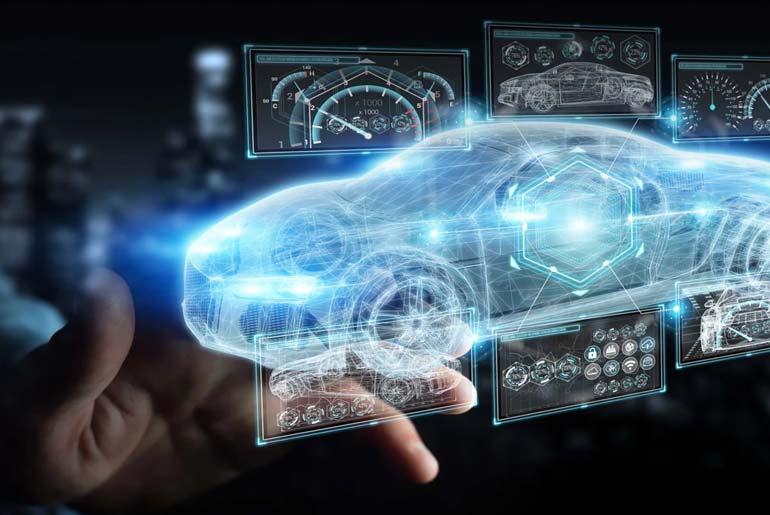
Electric Vehicles (EVs) represent a significant leap in automotive technology, with their reliance on battery power and electric motors distinguishing them fundamentally from traditional internal combustion engine (ICE) vehicles. However, what truly sets modern EVs apart is the sophisticated software that controls and optimizes nearly every aspect of their operation. This article explores the critical role of automotive software in EVs, detailing its impact on performance, efficiency, safety, and the overall driving experience.
The Foundation of EV Performance: Software Integration
At the heart of every electric vehicle is a complex network of software systems that work together to ensure optimal performance. Unlike ICE vehicles, where mechanical systems dominate, EVs are driven by electric powertrains that require precise control and coordination. This control is provided by software, which manages everything from power distribution and battery management to regenerative braking and motor control.
Key Components of Automotive Software in EVs
- Battery Management System (BMS)
The Battery Management System is arguably the most crucial software in an EV. It monitors and manages the battery pack, ensuring safe and efficient operation. The BMS oversees charging and discharging cycles, balances cell voltages, and manages thermal conditions to prevent overheating. Advanced algorithms in the BMS can predict battery health and longevity, allowing for preemptive maintenance and optimal usage patterns.
- Powertrain Control Software
This software controls the electric motor and power electronics, ensuring that power delivery is smooth and responsive. It adjusts the torque and power output based on driver input and driving conditions, optimizing for efficiency and performance. The powertrain control software also integrates regenerative braking, which recaptures energy during braking and feeds it back into the battery, extending the vehicle’s range.
- Energy Management System (EMS)
The EMS regulates the flow of energy within the vehicle, balancing the demands of various subsystems like the climate control, infotainment, and lighting with the primary need to power the vehicle. By prioritizing energy usage and implementing smart energy-saving strategies, the EMS maximizes the overall efficiency of the EV.
- Advanced Driver Assistance Systems (ADAS)
Software also plays a pivotal role in enhancing vehicle safety and driver convenience through ADAS. Features such as adaptive cruise control, lane-keeping assist, automatic emergency braking, and parking assistance rely on sophisticated algorithms and real-time data processing. These systems use a combination of sensors, cameras, and radars to monitor the vehicle’s surroundings and assist the driver in making safe driving decisions.
- Infotainment and Connectivity
Modern EVs are equipped with advanced infotainment systems that provide navigation, entertainment, and communication services. These systems are heavily software-dependent, integrating with smartphones, cloud services, and other digital platforms to offer a seamless and connected driving experience. Over-the-air (OTA) updates enable manufacturers to roll out new features and improvements without requiring a visit to the service center.
The Benefits of Automotive Software in EVs
- Enhanced Efficiency
Software optimizes the performance of various EV components, ensuring that the vehicle operates at peak efficiency. By managing power distribution and energy usage, software helps extend the driving range and reduce energy consumption.
- Improved Safety
Safety systems powered by advanced software algorithms can detect and respond to potential hazards more quickly and accurately than human drivers. This leads to a reduction in accidents and enhances overall vehicle safety.
- Personalized Driving Experience
Software allows for a high degree of customization in the driving experience. Drivers can adjust performance settings, climate controls, and infotainment preferences to suit their individual needs. Machine learning algorithms can even adapt to driving habits over time, further personalizing the experience.
- Continuous Improvement
Through OTA updates, EV manufacturers can continuously improve vehicle performance, add new features, and address any software issues. This capability ensures that EVs remain up-to-date with the latest technological advancements and improvements long after they have left the showroom floor.
Future Prospects and Challenges
The future of automotive software in EVs looks promising, with advancements in artificial intelligence, machine learning, and connectivity poised to drive further innovation. However, the increasing reliance on software also presents challenges, particularly in terms of cybersecurity and data privacy. As vehicles become more connected, protecting them from cyber threats will be paramount.
Moreover, the complexity of automotive software requires robust development and testing processes to ensure reliability and safety. Collaboration between automakers, software developers, and regulatory bodies will be essential to address these challenges and harness the full potential of automotive software in EVs.
Conclusion
Automotive software is the cornerstone of modern electric vehicles, enabling advanced functionality, enhancing efficiency, and ensuring safety. As the EV market continues to grow, the role of software will become even more critical, driving innovation and shaping the future of transportation. By leveraging cutting-edge software technologies, automakers can deliver superior driving experiences and contribute to a more sustainable and connected automotive ecosystem.
